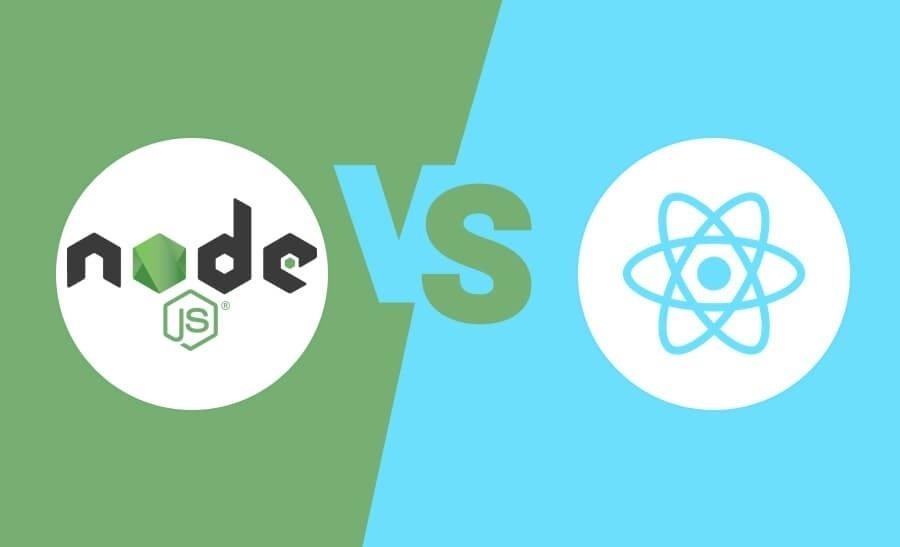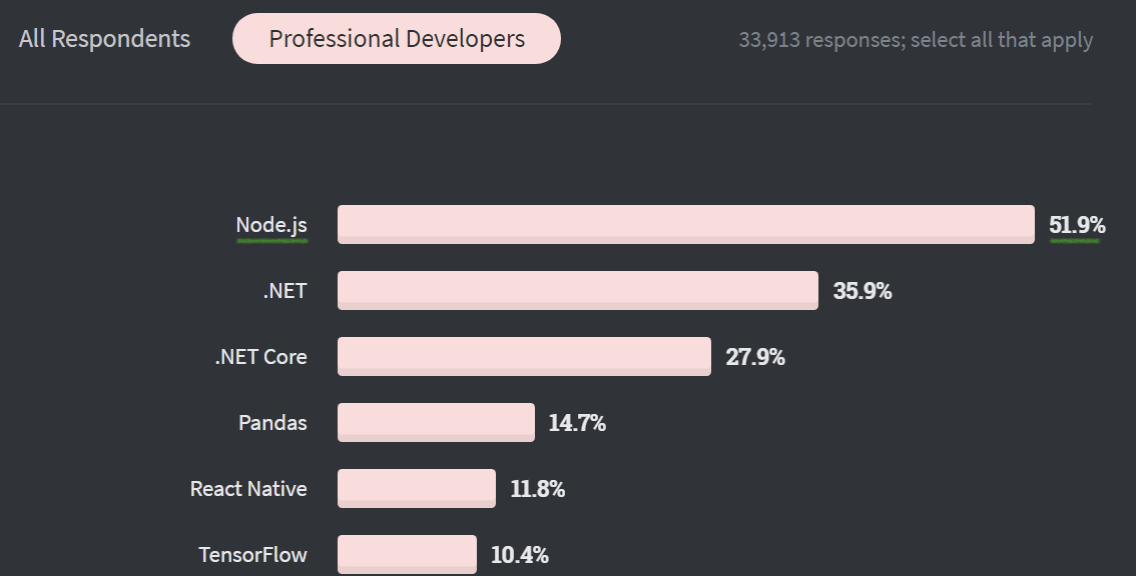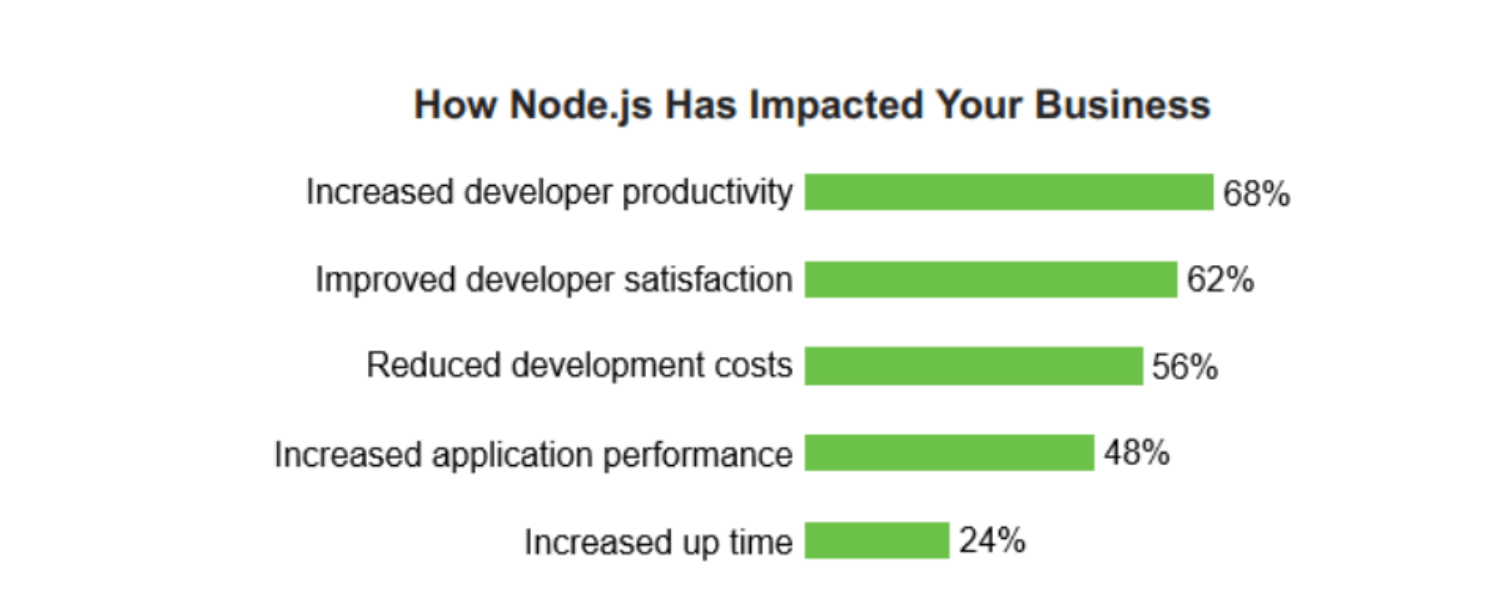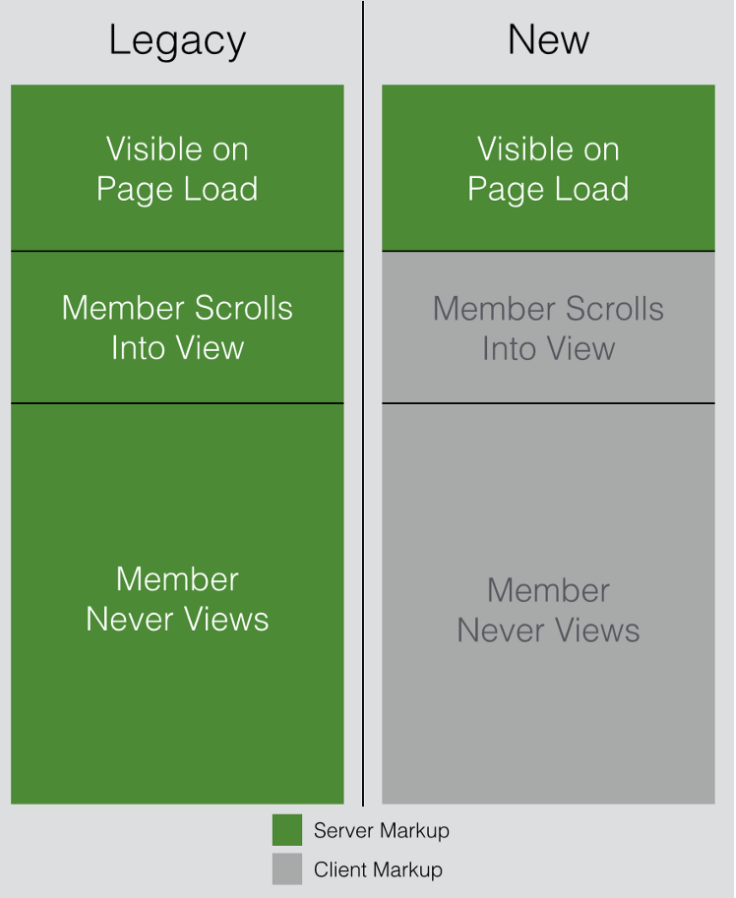
Why Should Your Next App Combine a NodeJS Back End with a ReactJS Front End App?
From NASA to Netflix, Node JS is changing the face of web development, by shaking hands with React JS.
Javascript is for sure, the future of web development. It powers a whopping 95% of websites on the internet. But until 2009, it was used for front-end components only.
With the launch of Node JS, a Javascript Runtime, the whole web development regime was revolutionized. Node JS makes it possible for Javascript developers to code the back-end and the front-end in the same language, taking code simplicity to another level.
Node JS and React JS is the ultimate combination that can supercharge your website.

What is Node JS?
Node JS is an open-source runtime environment for running JavaScript code outside of a browser. You have to keep in mind that NodeJS is neither a framework nor a programming language – it is a runtime environment. The majority of the business owners get confused and think that it is just like React JS. But, the reality is that it is entirely different from React JS and is used for different purposes.
What is React JS?
React JS is a JavaScript Library launched by Facebook and maintained by a community of millions of developers. It is used to develop the front-end of a web and mobile application and works depending on Model View Controller or MVC.
Developers use React as a base for creating single-page applications and afterward they utilize different libraries to give additional support to their web applications.
While you can use ReactJS for front-end development, NodeJS is used for the back-end. App developers use Node.js for developing back-end services like APIs for web or mobile apps. It’s utilized in production by big brands, like, Uber, Paypal, Netflix, etc.
Let’s dive deep into why the two technologies are used in tandem and how you can leverage them!
Why is Node JS Special?
Stack Overflow’s 2020 Developer Survey results are out and Node.js is continuing at the top with a 51.9% stake as the most popular technology. It is also the second most popular project on Github with over 70,000 stars.

Node JS is an outcome of Google’s V8 engine that compiles Javascript in the browser. Ryan Dahl started using the V8 engine to compile Javascript in a server environment, and Node JS was born.
KEY ADVANTAGES OF USING NODE JS
Node Js offers a number of key advantages that are both business and development friendly.

- Lower Infrastructure Needs
Node JS is extremely lightweight and has lower runtime requirements. This means the same servers can now manage a higher workload with increased efficiency.
From a business perspective, this equates to savings in terms of infrastructural costs such as Virtual Machines, Web Server Hosting and Local Servers that are used for running Applications.
Godaddy was able to reduce its servers by a factor of 10 since it started using Node.js in its new rebranded website. The savings in reduced number of servers, eventually helps the company improve its cost-efficiency, and maintain profits.
- Faster Website Speed
The websites that use React JS and Node Js together have reduced load times. This results in the website being served and under the goal of 3 seconds.
A Google survey highlighted that websites that take more than 3 seconds to load were abandoned by half of the visitors. This points to the fact that slow websites will eventually cost you more in design and development, but offer low ROI.
Implementing Node JS makes sure that your website loads faster due to asynchronous loading. Only the part of the website that appears to the user loads first, rest loads later, saving load time.
Netflix brought down their interface load time from 5-10 seconds to 2 seconds using Node.js. This was made possible by using React JS in tandem with Node as the server.

- Highly Improved Scalability
Scalability refers to the ease of expanding infrastructure when the requirements grow. Using Node JS, companies have been able to improve their scalability multi-folds as Node JS integrates with other technologies easily, and follows the Microservices architecture.
In 2020, the React JS development companies are using Node Js to build the applications in a highly fragmented fashion. The old regimes that employed monolithic design are being revamped into smaller components that can act independently.
Uber manages its 14 million trips using Node Js, by creating a stateless architecture of 600 API points. This means that Node JS allows the development of smaller components that are easier to manage and build. This way the application can be easily upgraded when needed.

- Development and Project Efficiency
According to Freelancing Gig, Node.js is among the top 5 easiest languages to learn for server-side scripting. With a lower learning curve, a single developer can code the entire website from front to back, using the same languages. This is very hard to achieve with other languages such as PHP or Python.
Because it's easier to code in Javascript based environments, developers take less time building applications, allowing businesses to save costs in development timelines.
This is a huge business advantage that Node JS provides over its competitors. PayPal, which is a popular payments provider, was able to cut short the development time in half using Node JS and React JS, in comparison to their primitive JAVA application.
Why is React JS Special?
React JS is an open-source Javascript based front-end framework that allows web developers to build the “View” part of the MVP paradigm. React JS, hence helps in building the UI elements of web apps and websites.
The library was released by Facebook under an open-source license in 2015, after which it became increasingly popular among the web development community due to its helpful features.
React JS is currently one of the most popular repositories on Github, and is an in-demand skill around the world, due to its implementation in modern web development techniques.
A number of popular websites use React JS for front-end such as Facebook, Instagram, Codecademy, and The New York Times.
KEY ADVANTAGES OF USING REACT JS
React JS offers a number of technical advantages to websites, as well as, mobile Apps.
- Lower Development Time
Being a Nativ Javascript library, React JS is easier to learn and develop. It also comes with a number of reusable components that make the process of creating User Interfaces with React much easier.
Companies who use React Js have claimed that it offers a much lower Time-to-Market ratio as compared to other Front-end technologies. It offers significant savings on developer resources as well.
Facebook uses React JS in their entire front-end which has helped them push updates faster than anyone. In the span of 3 years, Facebook’s 2 billion user application has been able to completely revamp the front end twice. Thanks to React JS!
- Progressive Web App Development
A core feature of using React Js for front-end development is that it helps you create Interactive UI elements that function as Progressive Web App on mobile phones.
PWAs have been around for a long time but their true implementation is being realized with React JS. It helps developers offer Mobile-App like functionalities to users on the mobile website. It’s not only responsive but also optimized for performance.
Twitter has been using React JS for their new Twitter Lite Mobile Website that loads much faster than the Twitter Mobile App, and lets users quickly browse the feed. It also updates automatically, helping users get the latest tweets in the feed without hitting the refresh button.
- Cross-Platform Support
React JS allows developers to code the Desktop Website, while they’re developing the Mobile Site. It enables them to code for multiple platforms simultaneously using the same codebase.
This increases the usability of the framework, allowing companies to optimally build applications for various platforms at the same time. React JS supports Web Apps, Mobile Apps and Desktop Applications alike. The Javascript component is highly fluid when it comes to integration with other technologies.
Atlassian, a renowned DevOps tool provider has deployed its Web and Mobile Applications using React JS alone. This saves them development time, as well as, continuously improving their existing codebase with ease.
Jira, BitBucket, HipChat are all built using React JS.
- Mobile App Support for React Native
One of the key breakthroughs provided by React JS is its cousin library called React Native. React Native finds a great fit in Mobile Application Development, as developers can compile HTML, CSS and Javascript files into platform-native code directly.
This enables a web developer to build mobile apps, without having to learn platform-specific languages. Javascript manages it all. There are a number React JS App Development companies that use Node JS and React JS to build high-performance Mobile Apps.
Everyone’s favourite messaging app, Whatsapp is also built using React Native. No surprises there! Since the acquisition by Facebook, the app has been fully reinvented to build its interactive UI using React Native for both iOS and Android Applications.
Why Does Your Next App Need Node Js and React JS?
Use Cases Supported By Node JS and React JS
- Real-Time-Data Intensive Applications
Node Js is the perfect fit for apps that have real-time data fetching and transport requirements with multiple concurrent connections. Such Apps can benefit Node Js as it provides millions of connections at the same time, accessing databases, without lag in performance.
Examples
• Chat Applications
• Stock Analysis Applications
• Mobile Games
• News Applications
• On-demand Service Applications
• Dashboards
• Data Analytics
2. Microservice Applications with APIs
Microservice Applications are a collection of several smaller loosely coupled Apps that run side-by-side to achieve a single goal. It’s like several fragmented mini-applications held together by a middleware.
Microservice applications are highly scalable and talk via APIs. They can be easily integrated into other systems and also make the process of code management easier.
Examples
• Product Catalog Management
• Inventory Management
• Order Management
• Delivery Management
• User Management
3. Cross-Platform Mobile Apps
React Native and Node JS can be used in unison to build a high-performance mobile app with 30-40% lower costs as the same language is used to write the back-end and the front-end.
Mobile Apps that don’t have platform-specific requirements such as Camera, Sensors and native features, can easily leverage React JS for their development.
Examples
• Facebook – Real-time Updates and UI
• Whatsapp – Real-Time Chat
• Instagram – Media and User Data Management
• Uber – APIs and Real-Time GPS tracking
• Workfeed – Local Trade Services Database
• Swiff – Mobile Marketplace for Service Providers
Conclusion
As trends suggest, the adoption of React JS for front-end and Node JS for Back-end will continue to rise. Laying the foundation for your Web project with these technologies is a critical decision that should be taken well in time.
You have familiarized with the advantages of both React and Node JS, and have a clearer idea of how these technologies work. But understanding your own business idea is a separate question.
Trending
-
1 How Does SaaS Differ From IaaS And PaaS?
Fabrice Beaux -
2 Single Page Applications vs Multi-Page Applications
Fabrice Beaux -
3 Top 7 Effective Strategies for Multi-Language Website Development
Fabrice Beaux -
4 Boost Engagement to Infinity and Beyond: Unleashing AI-Driven Support
Anas Bouargane -
5 The Cheapest And Most Beautiful Stickers in CS2
Daniel Hall





Comments